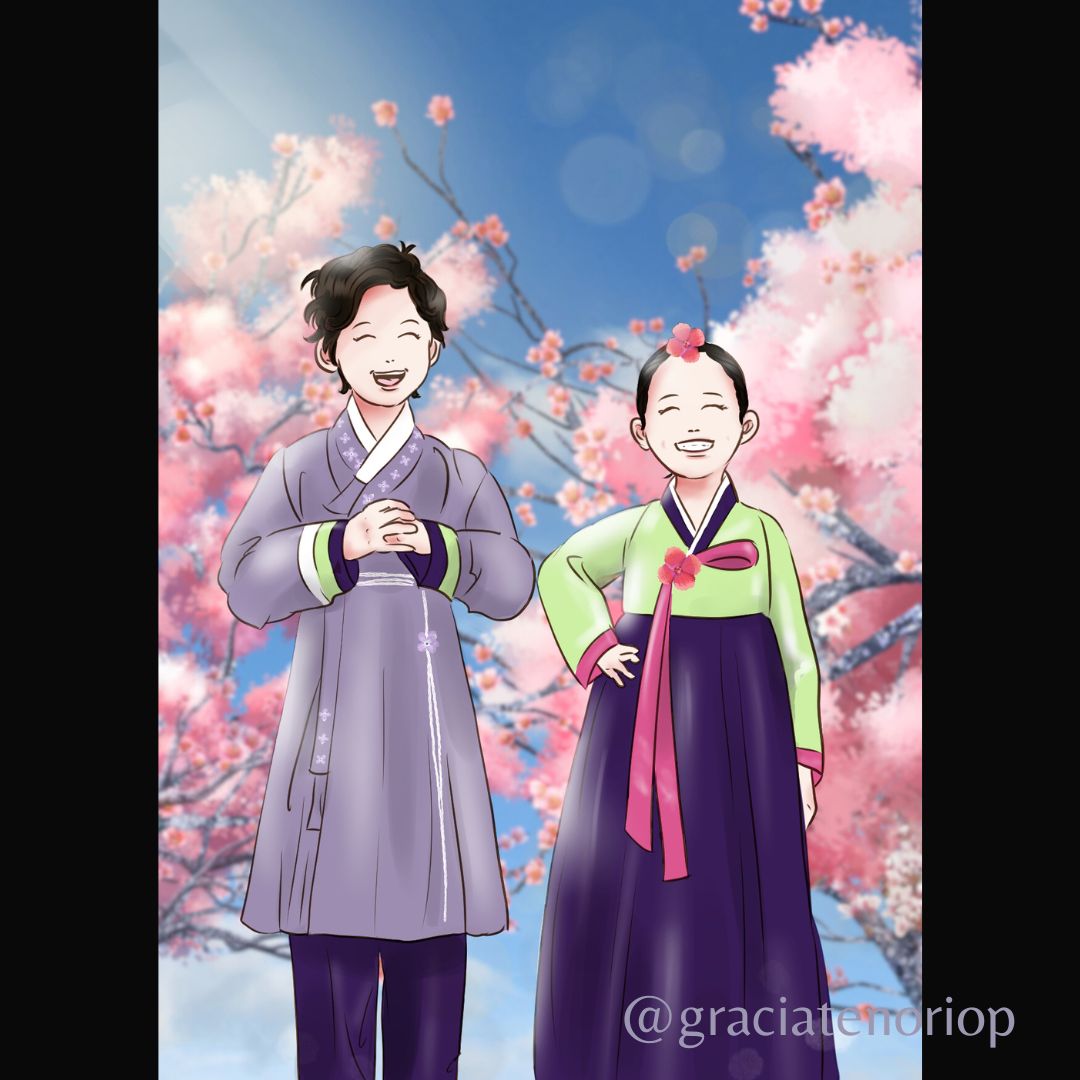
HANBOK - Just as art can teach us various facts about the history of a society -some of them not even in books! - the same happens with clothing. The fabrics, colors, shapes, and images of garments tell us a great deal about the main values of different cultures.
Today, let's take a look at the traditional clothing from Korea, the hanbok. The word "hanbok" simply means "Korean clothing". The term was introduced in the late 19th century for Koreans to differentiate their daily attire from the recent arrival of Western clothing. But before this, it was their everyday wear for the previous 2000 years. Hanbok refers to the set of various garments that make up the dress, such as the "kimono" for Japanese, or the "mariachi suit" for Mexicans.
The hanbok for women has a short jacket called "jeogori" and goes with a full skirt called "chima". The hanbok for men is a short jacket combined with trousers called "baji", and a short coat called "baeja". The same standard is followed for the children's hanbok.
Hanbok expresses natural beauty, thanks to its delicate lines, while allowing free and elegant movement of the body. Its textures are woven by hand and the decorations imitate flowers, butterflies, animals, and other elements of nature.
Of course, the hanbok has had changes throughout time, however it is still worn today in Korea for special celebrations, like weddings, birthdays, and milestones. We can also find a variation in contemporary fashion and haute couture.
As an immigrant myself, I find it fascinating not only to be able to pass on the cultural pride in our clothing to future generations, but also to learn about other cultures through theirs.
Source: The Korean In Me (2023); The New York Times (2022).
Original article found at IG, and FB